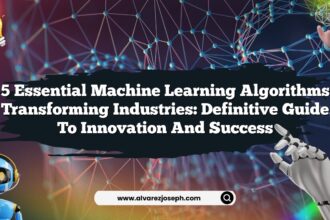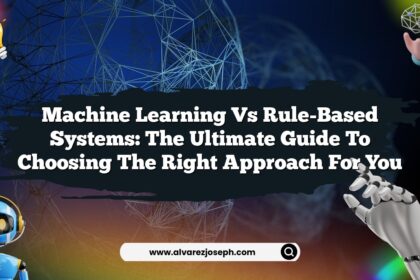Imagine stepping into a world where computers not only understand your needs but anticipate them with uncanny accuracy. That’s the magic of machine learning—a realm where algorithms learn patterns and make decisions. But before these algorithms can work their magic, they need something crucial: data. Like chefs needing fresh ingredients to whip up a culinary masterpiece, machine learning models need rich datasets to train, learn, and evolve. So, which datasets are the secret sauce in this AI-driven world? Let me take you on a journey through the essential datasets you need to know for success in unlocking the power of machine learning.
The Power of Datasets in Machine Learning
Picture datasets as the fuel that powers the sleek, high-tech race car of machine learning. Without them, even the most advanced algorithms would sputter and stall. But with the right datasets, these algorithms can soar to impressive heights, predicting trends and identifying patterns with remarkable precision. Yet, not all datasets are created equal. The quality, diversity, and relevance of a dataset can make or break a model’s accuracy and efficiency. So, how do we identify the best among them?
Commonly Used Datasets: The Tried and True
When it comes to foundational datasets, there are a few stalwarts that have stood the test of time and are frequently used for benchmarking and training:
-
MNIST Dataset: This classic dataset is the bread and butter for anyone venturing into image recognition. It consists of handwritten digits and is the go-to for testing basic image processing algorithms.
-
CIFAR-10 and CIFAR-100: These are a set of images used for object recognition. CIFAR-10 contains 60,000 images across 10 classes, while CIFAR-100, as the name suggests, expands this to 100 classes.
-
ImageNet: For those delving into deep learning, ImageNet offers a vast database of labeled images, making it a treasure trove for training complex models.
Each of these datasets provides unique challenges and insights, pushing the boundaries of what’s possible with machine learning.
Specialty Datasets: The Niche Performers
Just as different spices enhance various dishes, specialty datasets can significantly enhance the performance of machine learning models in specific domains:
-
COCO (Common Objects in Context): This dataset is perfect for computer vision tasks that require understanding objects within complex scenes.
-
Librispeech: For those interested in automatic speech recognition, Librispeech offers an extensive corpus of English read audiobooks.
-
Kaggle Datasets: A rich repository for niche datasets across diverse fields. From finance to healthcare, Kaggle is a playground for data enthusiasts.
These datasets allow models to handle more complex tasks by providing data rich in context and variety.
The Importance of Diversity in Datasets
In the world of machine learning, diversity isn’t just a buzzword—it’s a necessity. Models trained on diverse datasets perform better across different scenarios. Think of it as preparing a chef to cook a variety of cuisines instead of just one. A diverse dataset ensures that models are robust, reliable, and unbiased. Without diversity, models risk becoming narrow-minded, performing well only in certain scenarios or, worse, perpetuating existing biases.
Real-world Datasets: Bringing Theory to Life
While benchmark datasets are invaluable, real-world applications demand real-world data:
-
Amazon Reviews: Perfect for sentiment analysis, this dataset offers insights into consumer opinions across a plethora of products.
-
Twitter Sentiment Analysis: With real-time data, this dataset is crucial for understanding public sentiment and trends.
-
Cityscapes: A dataset designed for urban scene understanding, ideal for those working on autonomous vehicles.
These datasets bring models closer to the chaotic, unpredictable world outside the lab, preparing them for real-world applications.
Data Cleaning: The Unsung Hero
Before diving into analysis, data often requires a good scrub. Data cleaning may not be glamorous, but it’s essential. Imagine trying to understand a novel written with spelling errors and grammar mistakes—it’d be confusing, right? Similarly, clean data ensures that models are trained accurately, free from noise and errors. From removing duplicates to handling missing values, data preprocessing is the unsung hero in the data pipeline.
Open Source Datasets: A Community Treasure Trove
Open source datasets are a testament to the collective power of the community. They are freely available and foster innovation and collaboration:
-
UCI Machine Learning Repository: A classic repository that offers a wide range of datasets for different tasks.
-
GDELT: A comprehensive dataset that captures global events, perfect for those interested in media analysis.
-
OpenStreetMap: Ideal for geographic data enthusiasts, this dataset offers detailed maps and geospatial information.
These resources democratize access to high-quality data, allowing anyone with an internet connection to dive into machine learning.
Ethical Considerations: The Data Dilemma
With great data comes great responsibility. Ethical considerations are paramount in today’s data-driven world. Bias in datasets can lead to biased models, affecting decisions in critical areas like hiring, lending, and law enforcement. Hence, it’s crucial to ensure datasets are representative, fair, and used responsibly. As stewards of this technology, we must constantly question: Are the datasets we’re using ethical? Are they protecting privacy and promoting fairness?
Building Your Own Dataset: A Custom Approach
Sometimes, the perfect dataset isn’t available, and building your own is the best option. But where to start? Here’s a simple roadmap:
-
Define Your Objective: Know what you want to achieve.
-
Gather Data: Use web scraping, APIs, or existing databases.
-
Label Data: This could involve manual labeling or using semi-supervised techniques.
-
Preprocess: Clean, normalize, and augment your dataset.
-
Evaluate: Continuously test and refine your dataset.
Creating your own dataset provides the flexibility to tailor it to specific needs, ensuring that your model receives the most relevant and high-quality data.
Staying Ahead of the Curve: Trends in Datasets
As machine learning evolves, so do the datasets. New trends are emerging, such as synthetic datasets and federated learning. Synthetic datasets are artificially generated and offer endless possibilities for training models without real-world data constraints. Federated learning, on the other hand, allows collaboration across different datasets while maintaining data privacy—a boon for industries like healthcare and finance.
Quick Summary
- Datasets are the backbone of machine learning; they breathe life into algorithms.
- Commonly used datasets like MNIST and ImageNet are foundational for model training.
- Specialty datasets cater to niche domains, enhancing model specificity.
- Diverse datasets ensure robustness and mitigate biases in model predictions.
- Real-world datasets prepare models for practical applications outside laboratories.
- Data cleaning is crucial for accurate model training, despite its lack of glamour.
- Open source datasets democratize access, enabling widespread innovation.
- Ethical considerations are vital in data handling to ensure fairness and privacy.
- Building custom datasets offers tailored solutions for specific machine learning tasks.
- Staying updated with trends, like synthetic datasets, is essential for future-proofing.
Frequently Asked Questions
What is the most important dataset in machine learning?
There’s no single "most important" dataset as it depends on the task. For image recognition, MNIST and ImageNet are fundamental. For natural language processing, datasets like Librispeech are key.
Why is diversity important in datasets?
Diversity ensures that machine learning models are robust and unbiased, performing well across various scenarios and reducing the risk of perpetuating existing biases.
How do ethical considerations impact dataset usage?
Ethical considerations are crucial to prevent biases and protect privacy. Ensuring datasets are representative and used responsibly is essential to maintain fairness and trust in AI applications.
Can I create my own dataset?
Absolutely! Creating your own dataset allows for customization and relevance, tailored specifically to your model’s needs. Just ensure proper labeling and preprocessing.
What are synthetic datasets?
Synthetic datasets are artificially created to mimic real-world data. They offer endless possibilities for training models without the constraints of real-world data collection.
How can open source datasets benefit me?
Open source datasets provide free access to high-quality data, fostering innovation and collaboration across the community. They are invaluable resources for both beginners and experts alike.
And there you have it—a comprehensive dive into the essential datasets for machine learning success. Whether you’re a seasoned data scientist or a curious beginner, understanding and leveraging these datasets can propel your machine learning projects to new heights. So, grab your datasets and start exploring this fascinating world of machine learning!












